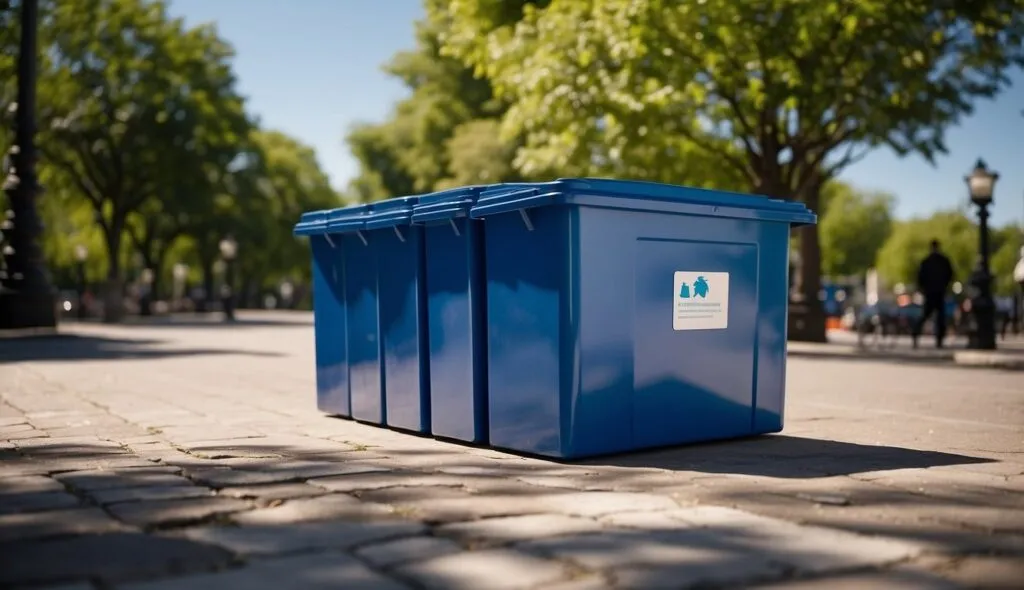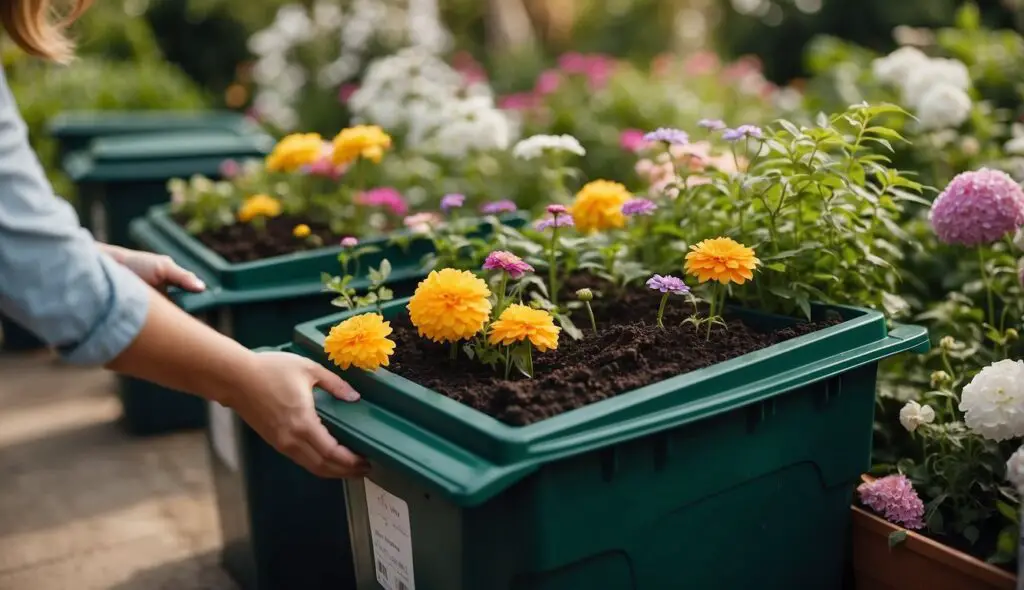Recycling is an essential aspect of sustainable gardening. It promotes environmental conservation by reducing waste and preserving natural resources. Recycled garden innovations are becoming increasingly popular as people look for creative and innovative ways to make their gardens more sustainable. In this article, we will explore some of the most innovative recycling ideas in gardening, including how to maximize small spaces, composting, and soil health.
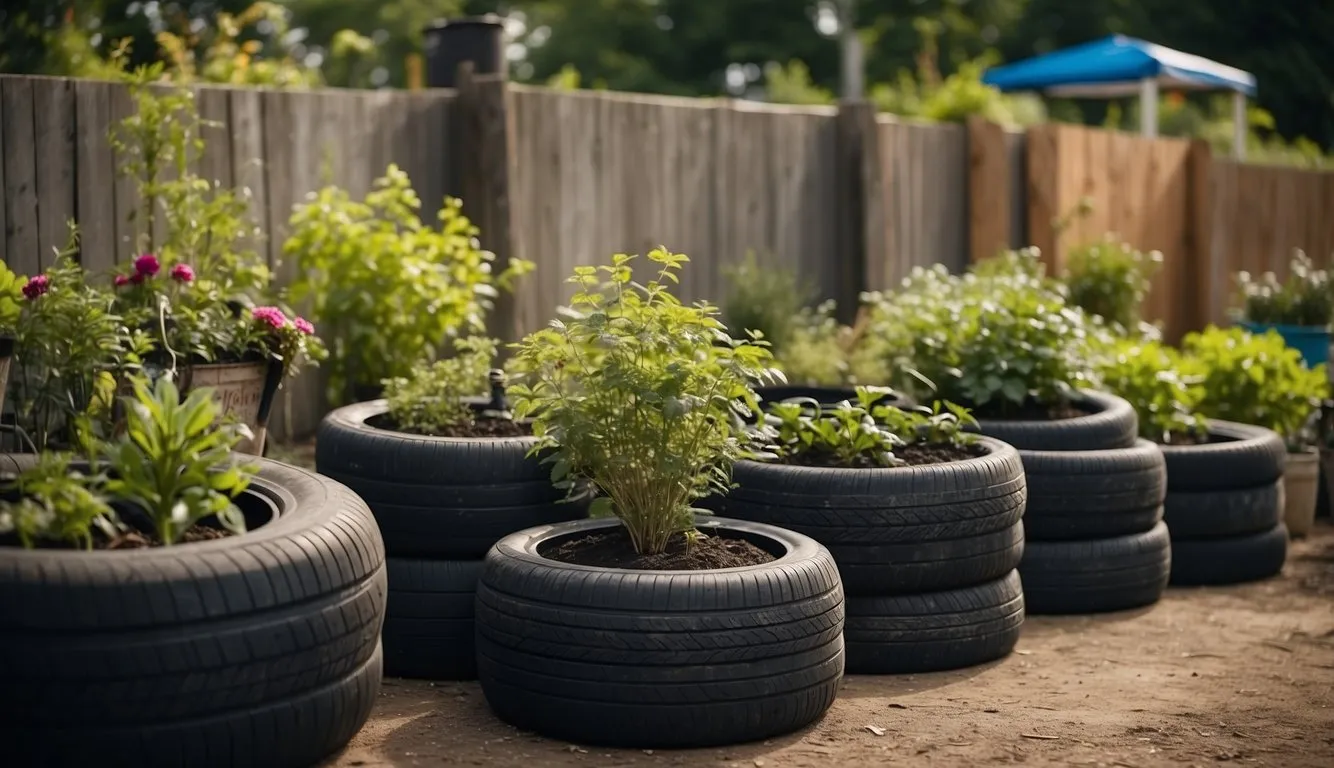
Understanding sustainable gardening is crucial to creating a garden that is healthy and environmentally friendly. Sustainable gardening involves using natural resources, such as water and soil, in a way that preserves them for future generations. It also involves reducing waste and promoting biodiversity. Innovative recycling in gardening is a crucial aspect of sustainable gardening, and it can take many forms, from using recycled materials to create garden features to composting kitchen waste to create nutrient-rich soil.
Maximizing small spaces is another essential aspect of sustainable gardening. With urbanization and population growth, many people are living in smaller homes with limited outdoor space. However, even with limited space, it is possible to create a beautiful and sustainable garden. By using vertical gardening techniques, container gardening, and other innovative solutions, it is possible to create a garden that is both attractive and environmentally friendly.
Table of Contents
Key Takeaways
- Sustainable gardening involves using natural resources in a way that preserves them for future generations.
- Innovative recycling in gardening is a crucial aspect of sustainable gardening.
- Maximizing small spaces is possible with vertical gardening techniques, container gardening, and other innovative solutions.
Understanding Sustainable Gardening
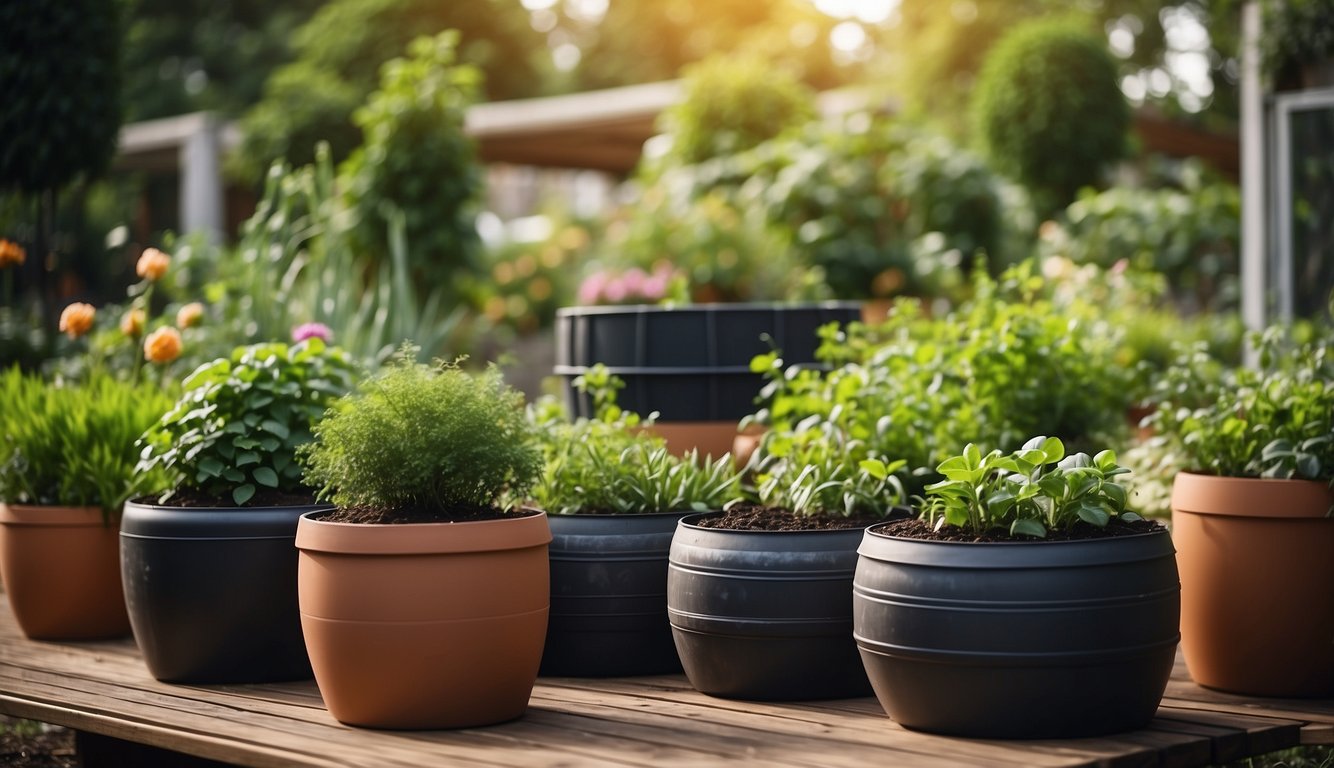
At its core, sustainable gardening is about creating a garden ecosystem that is environmentally conscious and responsible. This means that we prioritize the use of natural resources and minimize waste by recycling and composting. We strive to create a garden that is balanced, healthy, and self-sustaining.
One of the key principles of sustainable gardening is to use biodegradable materials whenever possible. This means avoiding synthetic fertilizers and pesticides, which can harm the environment and the plants themselves. Instead, we use natural fertilizers like compost, which is made from organic matter like food scraps, leaves, and grass clippings. Composting not only helps to reduce waste, but it also enriches the soil and promotes healthy plant growth.
Another important aspect of sustainable gardening is recycling. We can recycle in many ways, from using recycled materials to create garden beds and planters, to reusing old containers for seedlings or cuttings. By repurposing materials that would otherwise go to waste, we reduce our environmental impact and help to create a more sustainable future.
In summary, sustainable gardening is about being mindful of our impact on the environment and taking steps to minimize waste and protect natural resources. By composting, recycling, and using biodegradable materials, we can create a garden that is not only beautiful and productive, but also environmentally responsible.
Innovative Recycling in Gardening
As gardeners, we are always looking for new and innovative ways to recycle materials to create functional and beautiful garden features. Here are some of our favorite recycled gardening ideas:
Recycled Planters and Containers
Planters and containers are an essential part of any garden, and they can be made from a wide variety of recycled materials. We love using plastic containers, egg cartons, and even CDs to create unique and eye-catching planters. Reclaimed wood and recycled plastic are also great options for larger planters.
Building Raised Beds
Raised garden beds are a popular choice for gardeners who want to maximize their growing space and reduce the need for weeding and bending over. Pallets and reclaimed wood are great options for building raised beds, and we also love using old furniture to create unique and functional garden features. Bicycle spoke lattice is another innovative option for building raised beds.
Creative Garden Tools and Decorations
Garden tools and decorations can also be made from recycled materials. We love using tire rim hose winders to keep our garden hoses organized, and old CDs can be used to create reflective garden decorations that add a pop of color to any space. Pallets and reclaimed wood can also be used to create unique garden signs and decorations.
In conclusion, there are many innovative ways to recycle materials in gardening. From planters and containers to raised beds and garden decorations, there are endless possibilities for creating functional and beautiful garden features using recycled materials.
Maximizing Small Spaces

When it comes to gardening, small spaces can be a challenge. However, with a little creativity and innovation, we can maximize even the tiniest of spaces to create beautiful and functional gardens. In this section, we’ll explore some unique and space-saving solutions for small gardens.
Vertical Gardening Solutions
One of the most effective ways to maximize small spaces is through vertical gardening. This technique involves growing plants vertically instead of horizontally, which allows you to grow more in less space. There are many different types of vertical planters available, including hanging planters, wall-mounted planters, and even gutter gardens.
Hanging planters are a great option for those with limited outdoor space. They can be hung from a porch or balcony, or even from a tree. Wall-mounted planters are another popular option, and they can be used to create a living wall or to add some greenery to an otherwise bare wall. Gutter gardens are a unique and space-saving option that involves attaching gutters to a wall or fence and using them as planters.
Patio and Balcony Gardening
If you have a patio or balcony, you can still enjoy the benefits of gardening. One of the easiest ways to create a small garden in these spaces is by using flower pots. Flower pots come in a variety of sizes and styles, so you can choose ones that fit your space and aesthetic.
Another option for patio and balcony gardening is a mini greenhouse. Mini greenhouses are small, portable structures that can be used to grow a variety of plants. They are ideal for those who want to start seeds early in the season or who want to extend their growing season.
Finally, don’t forget about patio furniture when it comes to maximizing small spaces. A potting bench can be a great addition to a small garden, as it provides a space to pot plants and store gardening tools. And if you have a bit more space, consider adding a porch swing or some comfortable seating to create a relaxing outdoor oasis.
Composting and Soil Health
Composting is a simple and effective way to recycle food scraps and yard waste into nutrient-rich compost that can be used to improve soil health. By composting, we can reduce the amount of waste that goes into landfills and create a non-toxic, natural fertilizer for our gardens.
Creating Nutrient-Rich Compost
To create nutrient-rich compost, we need to balance the carbon and nitrogen ratio in our compost bin. Carbon-rich materials such as straw and leaves provide the energy source for the microorganisms that break down the organic matter, while nitrogen-rich materials such as food scraps and grass clippings provide the nutrients that plants need to grow.
We can speed up the composting process by turning our compost pile regularly and keeping it moist. This will help to create an aerobic environment that encourages the growth of beneficial bacteria and fungi.
Soil Moisture and Maintenance
Compost can help to improve soil moisture retention by increasing the water-holding capacity of the soil. This is because compost contains organic matter that can hold onto water and release it slowly over time. By adding compost to our soil, we can reduce the need for irrigation and improve plant growth.
In addition to improving soil moisture retention, compost can also help to maintain soil pH levels and reduce soil erosion. This is because compost contains a range of nutrients that can help to balance soil pH levels and improve soil structure.
Overall, composting is an easy and effective way to improve soil health and reduce our impact on the environment. By creating nutrient-rich compost and using it to support our organic gardening practices, we can create a healthier, more sustainable future for ourselves and for the planet.
Conclusion
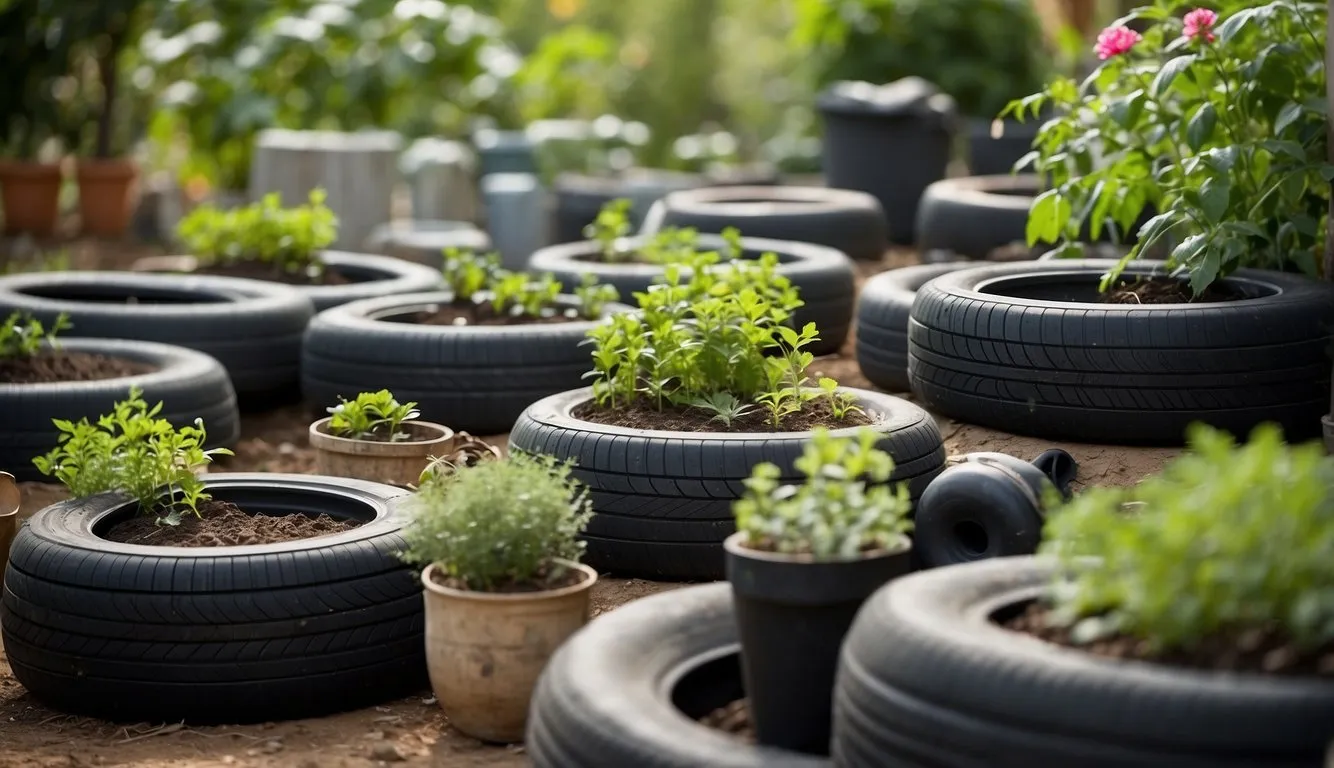
In conclusion, incorporating recycled materials into garden design is a great way to create a sustainable and eco-friendly outdoor living space. Not only is it environmentally responsible, but it can also be cost-effective and durable.
By using recycled materials, we can reduce waste and minimize our impact on the ecosystem. Additionally, creating a garden with recycled materials can provide a habitat for wildlife and help support biodiversity.
There are many innovative ways to use recycled materials in garden design, such as using old tires as planters, creating vertical gardens with reclaimed pallets, and using recycled glass to create garden paths. These materials can add unique and creative elements to any garden while also being functional and long-lasting.
Overall, incorporating recycled materials into garden design is a smart and sustainable choice. It can help reduce waste, support the ecosystem, and create a beautiful and functional outdoor living space.
Frequently Asked Questions
How can I create a vegetable garden with recycled materials?
Creating a vegetable garden with recycled materials is not only eco-friendly but also cost-effective. You can use old containers and tires to make innovative planters. You can also repurpose old pallets into vertical gardens to maximize space. Another idea is to use discarded buckets or cans as pots for your plants. The possibilities are endless, and you can get creative with the materials you have on hand.
What are some creative ideas for garden decor using recycled items?
There are many creative ways to decorate your garden using recycled materials. You can use old glass bottles to create a colorful border or wind chimes. You can also use old metal pipes or guttering to create a unique water feature. Another idea is to use old bicycle wheels or metal scraps to create garden sculptures. The key is to let your imagination run wild and experiment with different materials.
Can you provide examples of recycled materials that can be used to design a school garden?
Designing a school garden is a great way to teach children about sustainability and the environment. You can use old tires to create raised beds for your plants. You can also use old plastic bottles or milk jugs to create a greenhouse. Another idea is to use old wooden pallets to create a compost bin. The possibilities are endless, and you can get creative with the materials you have on hand.
What steps are involved in making a mini garden with recycled components?
Making a mini garden with recycled components is a fun and easy project. First, choose a container that is large enough to hold your plants. You can use old teapots, mugs, or even shoes as containers. Next, fill the container with potting soil and choose your plants. You can use succulents, herbs, or small flowers. Finally, add some decorative elements such as rocks or small figurines to complete your mini garden.
How does incorporating recycled materials benefit plant growth and garden health?
Incorporating recycled materials into your garden can benefit plant growth and garden health in several ways. For example, using compost made from recycled materials can improve soil health and provide essential nutrients for your plants. Using recycled water to irrigate your garden can conserve water and reduce your water bill. Using recycled materials as mulch can help retain moisture in the soil and prevent weed growth.
What are some unique items that can be repurposed into recycled garden art?
There are many unique items that can be repurposed into recycled garden art. For example, old bicycle wheels can be turned into a trellis for climbing plants. Old kitchen utensils can be turned into whimsical garden sculptures. Old doors or windows can be turned into a garden gate or a decorative wall. The key is to let your imagination run wild and experiment with different materials.

